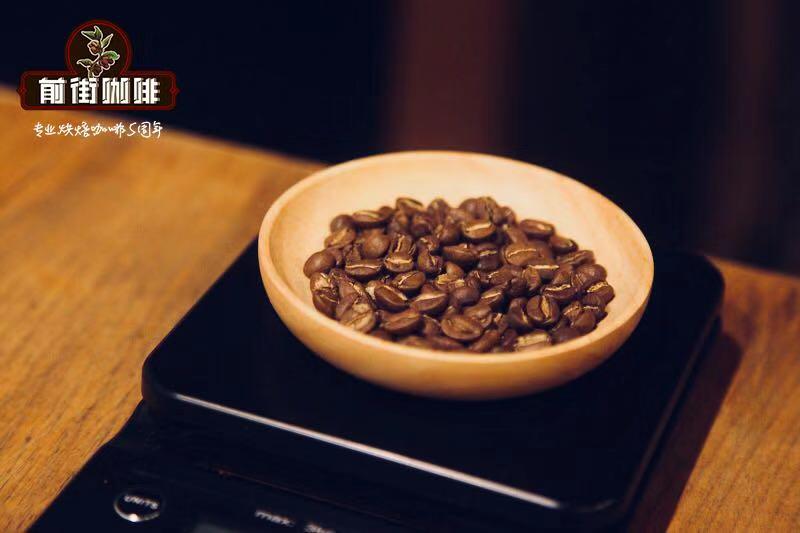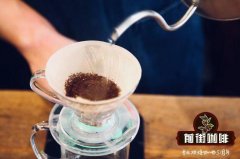So much coffee which kind of coffee bean is the most fragrant | how to choose what kind of coffee bean looks good

Professional coffee knowledge exchange More coffee bean information Please pay attention to coffee workshop (Weixin Official Accounts cafe_style)
I. Different places of origin
Different habitats have different temperatures, rainfall, sunshine, humidity, and soil composition. Therefore, even if it is the same variety of coffee, it will grow different flavors and aromas in different environments.
For example, Ethiopia's rose summer is different from Panama's rose summer, because coffee trees produce different flavors of fruit depending on the environment in which they grow.
In general, African beans taste bright and cheerful, and the flavor in the mouth is varied and lively; Central and South American beans are passionate, and all the flavors come to you in one bite; Asian beans are more conservative, requiring long-term high temperature extraction and slow analysis. I have to say, beans are like people.
Second, different varieties
Different production places, even different manors, coffee varieties will be different, so the cultivated coffee varieties are also very diverse, of course, the taste and aroma of coffee are also variable. There are thousands of coffee tree species distributed all over the world. The more common tree species are as follows:
Typica: Superior aroma and mild acidity
Bourbon: Full bodied, intense aroma, very bright sweetness.
Caturra: refreshing fruity acidity, light sweetness.
Catimor: bitter, dark chocolate aromas.
Canefora: Also known as Robusta, taste alone
One, barley tea flavor.
III. Different treatment methods
Coffee berries are processed after picking. Typical processing methods are: Natural Washing Semi-washed Pulped Natural
- Red Honey
- Yellow Honey
- Black Honey
Sweetness & Body: Solarization> Natural Pectin Removal> Semi-washing> Washing
Acidity & Aroma: Washing> Semi-washing> Natural pectin removal> Solarization
IV. Different planting altitudes
Fine coffee growers, in order to be similar to fruit acidity, but also can have coffee depth dry fragrance, found suitable for planting fine coffee area is about 1500 meters ~2000 meters above sea level plateau. Because there is a large temperature difference between day and night, the amount of oxygen absorbed by plants increases, and coffee fruits contract more frequently. However, there are exceptions to this fact. In the Kona region of Hawaii, coffee beans are grown at an altitude of about 700~1100 meters. Because Hawaii has a unique island climate, excellent sun conditions, usually modern facilities, and farmers are very rich, so they all have feelings and integrity.
High altitude areas:
SHB (Strictly Hard Bean) / SHG (Strictly High Grown)
HB (Hard Bean) / HG (High Grown)
Mid-altitude areas:
600~900 m-PW (Prime Washed)
Low altitude areas:
GW (Good Washed)
5. Regional coffee grade benchmarks are different
Coffee grades from different places also have different classification criteria. Basically, there are four criteria for scoring raw coffee beans:
1. Planting altitude
2. Size of raw beans (sieve size Screen size)
3. Coffee bean flavor
4. Proportion of defective beans
But different countries have different benchmarks. In Brazil, for example, the criteria for taste are as follows (from high price to low price):
There are about four kinds of defective beans in coffee:
Over-fermented beans: spicy, astringent, sour and bitter.
Black beans: smelly and bitter.
Worm-eaten beans: smelly feet, rotting corpses.
Moldy beans: mildew, rot, bitterness.
6. The new and old degrees of raw beans are different
With the same kinds of beans, manors, elevations and planting methods, there is a great difference between new raw beans and old beans in dry and wet fragrance. Because coffee is also a kind of crop, freshness is very important for coffee.
In terms of water content, the processed raw beans contain about 11-13% moisture. The longer the storage time is, the moisture will be gradually lost. For example, after a year at room temperature, the water content of raw beans will drop to less than 10%. The color of raw beans just processed is blue-green / green, but as time goes on, the color of raw beans will gradually become light green, white or yellow. And with the extension of raw frying, the aroma of raw beans will change from grass and spice to hay or rice, and for a longer time, it will be completely tasteless.
7. With different preservation methods, the flavor and aroma will be maintained for different times.
No matter how good the quality of raw beans is, they will vary according to different preservation methods and facilities. The ideal thing is to maintain an indoor temperature of 15,18 degrees Celsius and an indoor humidity of 50% and 60%. The wrong way of preservation will affect the flavor and aroma of beans, and even deteriorate. It often causes raw beans to fade and whiten and become wet and soft.
END
Important Notice :
前街咖啡 FrontStreet Coffee has moved to new addredd:
FrontStreet Coffee Address: 315,Donghua East Road,GuangZhou
Tel:020 38364473
- Prev

Why do you say that espresso tastes too bitter? how do you adjust espresso too bitter?
Professional coffee knowledge exchange more coffee bean information please follow the coffee workshop (Wechat official account cafe_style) espresso, Espresso abroad, everyone is called espresso, Espresso. Now many domestic petty bourgeoisie also like its foreign name Espr.
- Next

Do you know the reason for the three-stage water injection of hand-brewed coffee | teach you the skills of hand-brewing coffee
Professional coffee knowledge exchange more coffee bean information please follow the coffee workshop (Wechat official account cafe_style) three-stage water injection method which we most often use and often see. This technique is suitable for light-roasted, medium-and medium-roasted coffee beans. The stage-by-stage extraction method of three-stage water injection is richer than that of one-knife flow, and it can make clear before coffee,
Related
- Beginners will see the "Coffee pull flower" guide!
- What is the difference between ice blog purified milk and ordinary milk coffee?
- Why is the Philippines the largest producer of crops in Liberia?
- For coffee extraction, should the fine powder be retained?
- How does extracted espresso fill pressed powder? How much strength does it take to press the powder?
- How to make jasmine cold extract coffee? Is the jasmine + latte good?
- Will this little toy really make the coffee taste better? How does Lily Drip affect coffee extraction?
- Will the action of slapping the filter cup also affect coffee extraction?
- What's the difference between powder-to-water ratio and powder-to-liquid ratio?
- What is the Ethiopian local species? What does it have to do with Heirloom native species?

